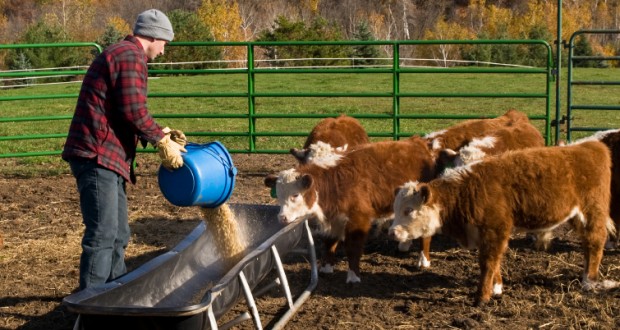
Scientists have discovered that antibiotic resistance from open-air farms can travel through the air to spread to human populations, potentially contributing to the growing worldwide threat of drug resistant infections.
After testing dust in the air near cattle feedlots in northwestern Texas’ Southern High Plains, researchers at The Institute of Environmental and Human Health at Texas Tech University found evidence of antibiotics, feedlot-derived bacteria, and bits of DNA that encode for antibiotic resistance.
The study, published in the journal Environmental Health Perspectives, is thought to be the first to document evidence of airborne transmission of antibiotic resistance from an open-air farm setting.
The researchers say that while they couldn’t assess whether the amounts of the materials they found were dangerous to humans, the results shed light on previously unanswered questions about which routes antibiotic-resistant bacteria could be using to travel long distances to places inhabited by humans.
70% of all antibiotics are used in animal farming
Bacteria become resistant to antibiotics for several complex reasons, which include repeated exposure to antibiotic medicine through improper prescription and use, according to the Centers for Disease Control and Prevention. Already, an estimated 1 in 10 antibiotic prescriptions fail to treat the infection, a rate that has increased over time and is still going up.
While the majority of drug-resistant infections occur in healthcare settings, concern is growing over antibiotic-resistant infections from food and agriculture. Antibiotics are commonly used to promote the growth of food-producing animals and to prevent, control and treat disease — in fact, 70% of all antibiotics sold in the U.S. are used in animal farming. But overuse can promote the prevalence of antibiotic-resistant bacteria in the food supply and ultimately cause resistant infections in humans.
Drug-resistant bacteria can and do travel on meat but that’s just one of many routes off the farm. These dangerous bacteria can hitch a ride out of animal feedlots on workers who handle contaminated animals or meat. They can travel through water, soil, and air that come into contact with contaminated animal waste. Antibiotic-resistant bacteria can “teach” other bacteria how to be resistant; this “knowledge” can even be passed on from harmless bacteria to pathogenic bacteria.
Dr. Phil Smith, the study’s lead author and an associate professor of terrestrial ecotoxicology at TTU, says it is widely known that bacteria are very “promiscuous” about swapping and sharing their genetic material, which crosses easily into other species. But while we know the mechanism through which resistance develops, what we don’t know so much about is how the resistant bacteria travel and move in the environment, says Dr. Smith.
In an attempt to address some of the questions surrounding this mystery, the team analyzed air samples taken upwind and downwind of each feedlot in the Southern High Plains in Texas.
Feedlots appear to be the source of airborne antibiotic resistance
The analysis showed there were more bacteria, antibiotics and DNA sequences that code for antibiotic resistance in the downwind than the upwind air samples, pointing to the feedlots as the source.
Bacteria are quite resilient beings and can survive on the particulate matter of the feedlot dust as they travel in the wind. And because the antibiotics travel with them, this puts them under selective pressure to retain their resistance as they multiply – the non-resistant ones just don’t finish the journey.
As the wind blows across the Southern High Plains, it carries with it the particulate matter with its burden of antibiotics and bacteria. The particles travel far from their starting point at the feedlot; add the infamous West Texas dust storms into the picture, and these materials have the potential to travel hundreds of miles into cities and towns, and possibly around the globe, the researchers say.
“I think implications for the spread of some feedlot-derived, antibiotic-resistant bacteria into urban areas is paramount to the research,” notes co-author Greg Mayer, an associate professor of molecular toxicology at TTU.
He explains that while they haven’t yet sampled particulate matter in urban areas to see if they contain bacteria from the feedlots, or whether they still contain antibiotic resistant bacteria, he believes the study is “proof of principle” for an airborne pathway for the spread of antibiotic resistance.
Based on these findings, Dr. Mayer say further research is needed to see where the particulate matter from the feedlots travels to and “what is happening to its passengers when it gets there.”
The study comes on the heels of a recent Review on Antimicrobial Resistance commissioned by British Prime Minister David Cameron that found the failure to deal with drug-resistant infections and their causes could lead to 10 million extra deaths per year by 2050. The associated global cost of such a devastating loss would be $100 trillion.
